An isolated solid metal sphere of radius R is given an electric charge. Which of the graphs below best shows the way in which the electric field E varies with distance x from the centre of the sphere?
1. 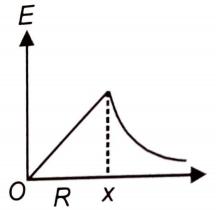
2. 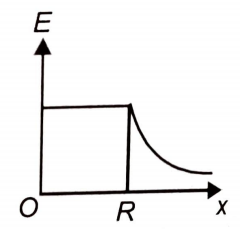
3. 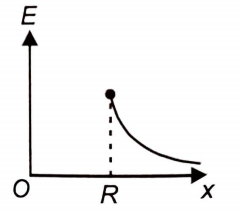
4. 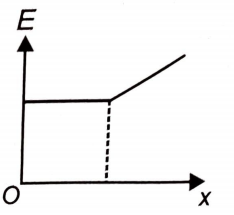




The electric field intensity at P and Q in the shown arrangement are in the ratio of:
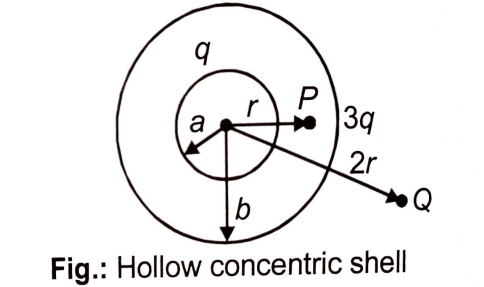
1. 1: 2
2. 2: 1
3. 1: 1
4. 4: 3
Consider an atom with atomic number Z as consisting of a positive point charge at the centre and surrounded by a distribution of negative charges uniformly distributed within a sphere of radius R. The electric field at a point inside the atom at a distance r from the centre is:
1.
2.
3.
4. Zero
An electron is rotating around an infinite positive linear charge in a circle of radius 0.1 m. If the linear charge density is 1 , then the velocity of the electron in m/s will be:
1.
2.
3.
4.
For two infinitely long charged parallel sheets, the electric field at P will be:
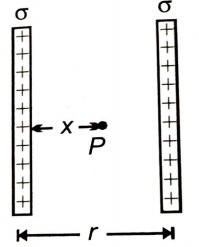
1.
2.
3.
4. Zero
When a test charge is brought in from infinity along the perpendicular bisector of an electric dipole, the work done is:
1. Positive
2. Zero
3. Negative
4. None of these
Two small spheres each carrying a charge q are placed at distance r apart. If one of the spheres is taken around the other in a circular path, the work done will be equal to:
1. Force between them r
2.
3. Force between them
4. Zero
Work done in moving a charge q coulomb on the surface of a given charged conductor of potential V is:
1. joule
2. joule
3. joule
4. Zero
The variation of electric field between the two charges q1 and q2 along the line joining the charges is plotted against distance from q1 (taking rightwards direction of field as positive) as shown, then the correct statement is:
1. q1 and q2 are positive and q1 < q2
2. q1 and q2 are positive and q1 > q2
3. q1 is positive and q2 is negative
4. q1 is positive and q2 is negative and q1 < |q2|
Two identical infinite positive line charges are placed along the lines , in the x-y plane. A positive point charge placed at origin is restricted to move along y-axis. Its equilibrium is:
1. Stable
2. Neutral
3. Unstable
4. None of these








